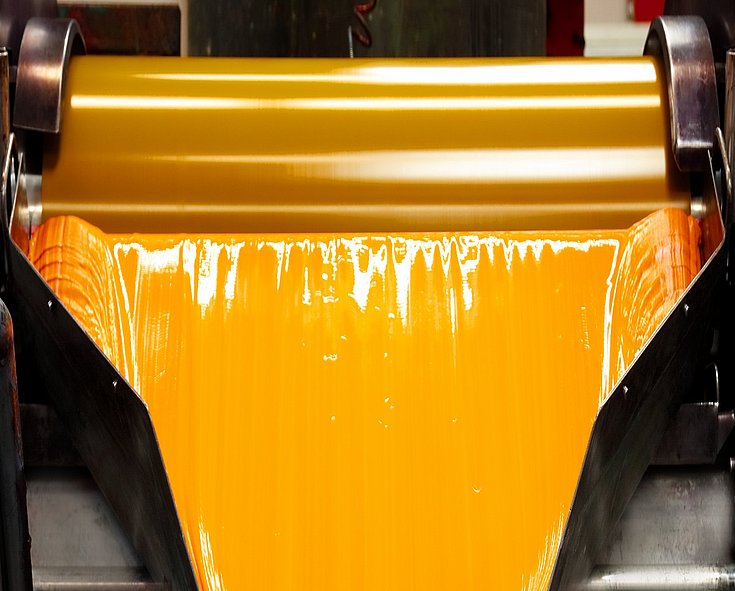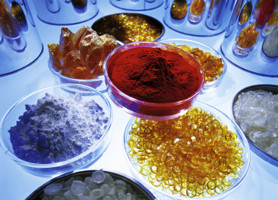
Colors are passion, emotions and personality. At Siegwerk, inks and coatings are our specialty and we use color to bring the packaging and products of our customers to life.

Printing Ink Industry Still under Cost Pressure in Raw Material Market – No Relief in the Short Term
They are indispensable for producing print products such as packaging, advertising brochures and newspapers. And in recent years they have constantly increased in price. This refers to tree resins, pigments, additives such as bonding agents and solvents – the raw materials and components used for the printing ink industry. Take for example titanium dioxide which has risen by 40 percent in price since 2010. The weakened euro, the increasing international demand – causing partial supply bottlenecks – on the raw material markets, rising energy and transportation costs, volatile crude oil prices, political instability and speculation all serve to aggravate the situation for the foreseeable future. “In the longer term we are stuck in a gradual but steady cost spiral with prices rising further, a situation that is exerting pressure on the entire industry. Selective price adjustments in 2013 are therefore inevitable in order to maintain the quality level of our printing inks,” stated Herbert Forker, CEO of the international Siegwerk Group based in Siegburg outside Cologne, Germany. With a variety of internal measures Siegwerk intends to counter the cost trend while simultaneously developing innovative solutions and new concepts together with its customers.
“What makes it problematic for the industry is that raw materials account for a major share of total printing ink manufacturing costs,” explained board member Ralf Hildenbrand who is also responsible for Purchasing at Siegwerk. “Purchase prices in 2012 were, to an extent, even higher than the 2011 prices, which, in turn, dramatically exceeded the 2010 prices in several important categories,” Hildenbrand added. Price increases in the basic materials needed for manufacturing raw materials for printing inks were one factor that triggered this development. Ethylene and styrene, both made from mineral oil extracts, are one example. “The price adjustments implemented during the last two years failed to fully compensate the raw material price increase. Therefore we cannot expect a relief on the pricing front either, as market conditions remain unfavorable,” confirmed Hugo Noordhoek Hegt, board member and President Packaging EMEA (Europe, Middle East, Africa) at Siegwerk.
Cost-Cutting and Quality Intensification Measures
“In-house we are consistently working on optimizing production processes, streamlining our purchasing organization and increased overall efficiency. Our application technology, noted for its competence and high performance, is also in a position to offer, together with our customers, innovative solutions and new concepts to compensate for the rise in costs as much as possible,” commented Siegwerk CEO Forker. All told, thanks to its international and highly integrated organization the company is very well positioned. Customers will profit in spite of increased costs. “High performance and consistent product quality and product safety, particularly in the food packaging industry, are the essential characteristics of the products we offer our customers,” noted Hugo Noordhoek Hegt, board member and President Packaging EMEA (Europe, Middle East, Africa) at Siegwerk. As Noordhoek Hegt added, “Packaging has long been recognized as the look of a brand name product and is an inherent part of every brand’s marketing mix. That is why we continue investing and working at confirming our market leadership in the future as well.”
No Escaping the Raw Materials Trap
There are several reasons why the printing ink industry has been stuck in a raw material pricing trap for several years. Suppliers all over the world drastically reduced production capacity during the economic crisis of 2008 and 2009. In Asia, production plants not compliant with environmental standards were, in part, shut down instead of being modernized or replaced. The continued strong growth in Asia is currently leading to partial supply bottlenecks and consequently to rising prices. Further consolidation of the already partly powerful supplying industry creates an increasingly difficult competitive environment. Rising energy and transportation costs in Europe, political instability, speculation – a major factor influencing some raw materials – as well as volatile crude oil prices and weakened currency rates against the euro, as in the case of China, all contribute in keeping raw material prices robust.
Siegwerk will inform its customers in short term what the expected implications will be for general market prices and discuss the need for price increases on an individual customer basis as of January 2013.